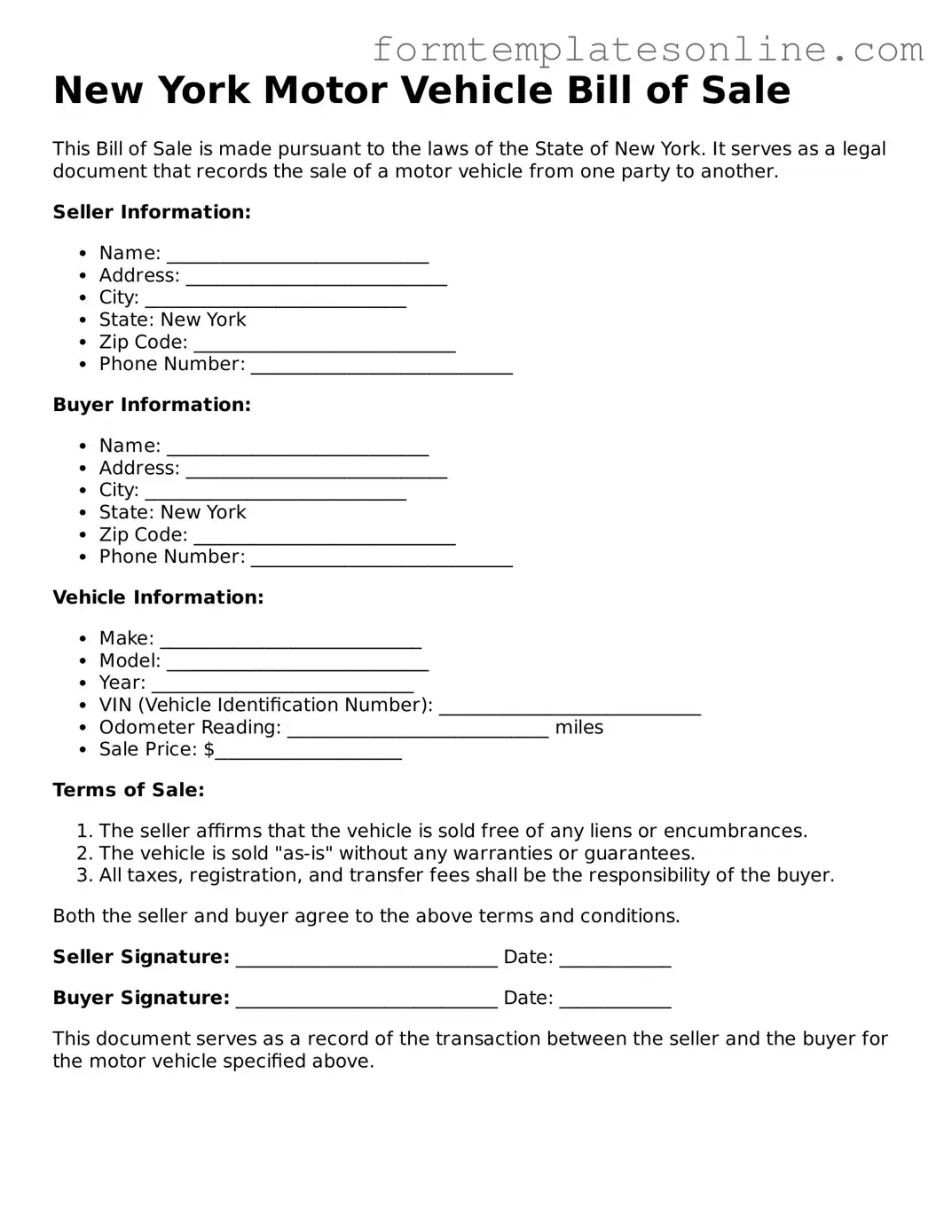What is a New York Motor Vehicle Bill of Sale?
The New York Motor Vehicle Bill of Sale is a legal document that records the sale of a vehicle between a buyer and a seller. It includes important details about the vehicle, such as its make, model, year, and Vehicle Identification Number (VIN). This document serves as proof of ownership transfer and can be used for registration purposes.
Do I need a Bill of Sale to sell a vehicle in New York?
While it is not legally required to have a Bill of Sale to sell a vehicle in New York, it is highly recommended. This document protects both the buyer and the seller by providing a record of the transaction. It can also help resolve any disputes that may arise later regarding ownership or payment.
What information is required on the Bill of Sale?
The Bill of Sale should include several key pieces of information. This includes the names and addresses of both the buyer and seller, the vehicle’s details (make, model, year, VIN, and odometer reading), the sale price, and the date of the transaction. Both parties should sign the document to make it valid.
Can I create my own Bill of Sale?
Yes, you can create your own Bill of Sale, but it must include all necessary information to be effective. You can also use a template or form provided by the New York Department of Motor Vehicles (DMV) to ensure that you have all the required details. Using a standard form can help avoid mistakes and ensure compliance with state requirements.
Is a Bill of Sale required for a gift of a vehicle?
Even if you are gifting a vehicle, it is a good idea to have a Bill of Sale. This document can help establish that the vehicle was given as a gift and not sold. It can also assist with the transfer of ownership at the DMV, making the process smoother for both parties.
What if the vehicle has a loan or lien on it?
If the vehicle has a loan or lien, it is important to resolve that before selling it. The seller should pay off the loan and obtain a lien release from the lender. This release can then be presented to the buyer along with the Bill of Sale, ensuring that the buyer receives clear title to the vehicle.
How do I submit the Bill of Sale to the DMV?
After completing the Bill of Sale, the seller should provide a copy to the buyer. The buyer will need to take this document to the DMV when registering the vehicle. It is advisable to keep a copy for personal records as well. The DMV may have specific submission requirements, so checking their website or contacting them directly can be helpful.
Can I use a Bill of Sale for a vehicle purchased out of state?
Yes, a Bill of Sale can be used for a vehicle purchased out of state. However, it is important to ensure that the document meets the requirements of both the state where the vehicle is being sold and New York. Buyers should check with the DMV for any additional documentation that may be needed for out-of-state purchases.
